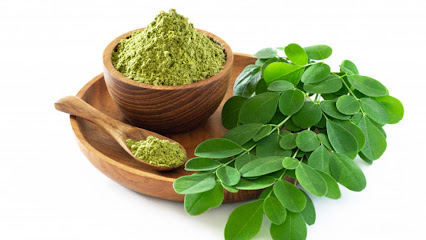Vitamin C, also known as ascorbic acid, plays a crucial role in the body’s overall health, acting as a powerful antioxidant, supporting immune function, and aiding in tissue repair and collagen synthesis. Although a deficiency of vitamin C is relatively rare in the general population, it remains a concern among the elderly, who are more vulnerable due to a variety of lifestyle and health factors. In older adults, a deficiency in vitamin C can lead to serious health issues, including abnormal bleeding and chronic fatigue.
The Importance of Vitamin C in the Elderly
As we age, our bodies face a natural decline in the ability to absorb and retain certain nutrients, and vitamin C is no exception. The elderly are also more prone to poor dietary habits, medical conditions that affect nutrient absorption, and medications that interfere with nutrient metabolism. This makes maintaining optimal levels of vitamin C particularly important for older adults to avoid both acute and long-term health complications.
Symptoms of Vitamin C Deficiency
Abnormal Bleeding
- One of the hallmark symptoms of vitamin C deficiency is abnormal bleeding, particularly in the form of bleeding gums or easy bruising. Vitamin C is essential for collagen production, which is critical for maintaining the integrity of blood vessels. A deficiency weakens these vessels, leading to bleeding under the skin (bruising) or from the gums. Prolonged deficiency can even lead to more serious bleeding issues, such as internal bleeding or slow wound healing.
Fatigue
- Fatigue is another common but often overlooked symptom of vitamin C deficiency. The body uses vitamin C to support energy production at the cellular level. A lack of vitamin C can lead to reduced energy, leaving older adults feeling lethargic, weak, or constantly tired. Fatigue from vitamin C deficiency can be exacerbated by anemia, as the vitamin aids in the absorption of iron, a mineral essential for red blood cell production.
Other Signs and Symptoms
- Dry skin: Collagen, which relies on vitamin C, is essential for skin health, so deficiency can lead to dry, scaly, or rough skin.
- Joint pain: Vitamin C is important for maintaining cartilage, so a deficiency may cause joint pain or swelling.
- Frequent infections: Vitamin C boosts immune function, and a deficiency may result in an increased susceptibility to infections.
- Swollen and bleeding gums: In addition to bleeding, gums may become swollen, tender, and more prone to infections.
- Slow wound healing: Cuts, scrapes, or bruises may take longer to heal due to impaired collagen production.
Causes of Vitamin C Deficiency in the Elderly
Poor Diet
- One of the main causes of vitamin C deficiency in older adults is poor diet. The elderly may experience a decrease in appetite, dental problems that make eating difficult, or a reliance on processed foods that lack sufficient nutrients. Limited access to fresh fruits and vegetables, which are the primary sources of vitamin C, also increases the risk of deficiency.
Medical Conditions
- Certain medical conditions common in older adults, such as gastrointestinal disorders (e.g., Crohn's disease, ulcerative colitis), can impair the absorption of nutrients, including vitamin C. Conditions like chronic kidney disease, diabetes, and infections may also reduce vitamin C levels in the body.
Medications
- Some medications commonly prescribed to the elderly, such as diuretics and corticosteroids, can interfere with vitamin C absorption or increase the body's need for it, leading to a higher risk of deficiency.
Smoking
- Smoking or exposure to secondhand smoke increases the body's need for vitamin C, as it accelerates the depletion of this nutrient. Older adults who smoke or are frequently exposed to smoke are at higher risk of deficiency.
Health Risks Associated with Vitamin C Deficiency
Scurvy
- Severe vitamin C deficiency can lead to scurvy, a condition that is characterized by bleeding gums, joint pain, anemia, and severe fatigue. While scurvy is rare in modern times, it can still occur, particularly in populations at risk, such as the elderly.
Increased Risk of Chronic Diseases
- Chronic vitamin C deficiency may contribute to the development of diseases such as heart disease, hypertension, and stroke. Vitamin C helps combat oxidative stress and inflammation, both of which are major contributors to the development of these conditions.
Compromised Immune Function
- A weakened immune system due to vitamin C deficiency can make older adults more susceptible to infections, including respiratory infections and pneumonia, which are particularly dangerous in this age group.
Prevention and Treatment of Vitamin C Deficiency
Dietary Sources
- Ensuring an adequate intake of vitamin C-rich foods is the best way to prevent deficiency. These include:
- Citrus fruits (oranges, lemons, grapefruits)
- Berries (strawberries, blueberries)
- Kiwi
- Bell peppers
- Tomatoes
- Broccoli and Brussels sprouts
- Spinach and other leafy greens
- Ensuring an adequate intake of vitamin C-rich foods is the best way to prevent deficiency. These include:
Supplements
- In cases where dietary intake is insufficient or absorption is impaired, vitamin C supplements may be recommended by healthcare providers. However, supplements should only be taken under medical supervision to avoid excessive intake, which can lead to other health issues, such as kidney stones.
Lifestyle Modifications
- Encouraging a healthy lifestyle that includes a balanced diet, regular physical activity, and smoking cessation can help elderly individuals maintain adequate vitamin C levels and overall better health.
Conclusion
Vitamin C deficiency is a potentially serious but often preventable condition in the elderly. Abnormal bleeding and fatigue are two of the most noticeable symptoms, but the deficiency can lead to a host of other health problems if left untreated. Ensuring a balanced diet rich in fruits and vegetables, along with appropriate medical interventions when necessary, can help elderly individuals maintain healthy vitamin C levels and reduce the risk of complications. Regular check-ups and awareness of dietary needs are crucial for preventing this silent yet harmful deficiency.









